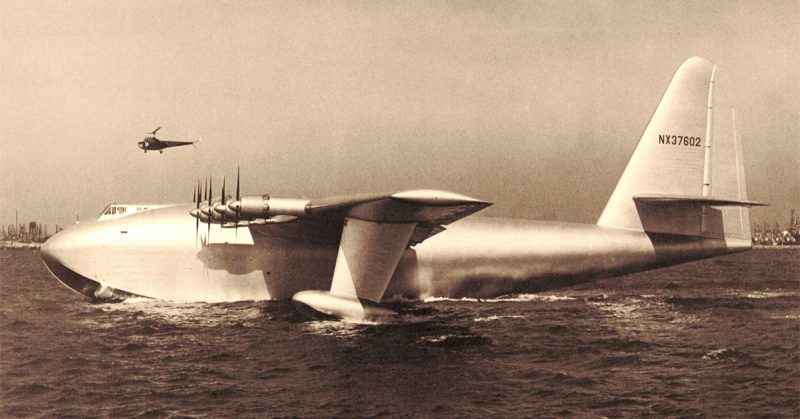Derisively nicknamed Spruce Goose, the colossal flying boat made just one flight lasting only about half a minute to establish a record that would remain untouched for over 70 years.
The journey that birthed this aircraft began in the United States in 1942, with the Second World War in full swing. While Germany was no match for the United States in terms of industrial capacity, wreaking havoc on Allied shipping in the Atlantic Ocean was something it executed quite well, ultimately sinking 2,825 merchant ships and 175 warships.
“The only thing that really frightened me during the war was the U-boat peril,” stated Winston Churchhill as he reminisced about the rampage of German submarines in the Battle of the Atlantic.
To participate in the Atlantic theater of the war, the US needed to move millions of servicemen and equipment across roughly three thousand miles of ocean all the way to Britain. But the Atlantic, obviously, was swarming with U-boats.
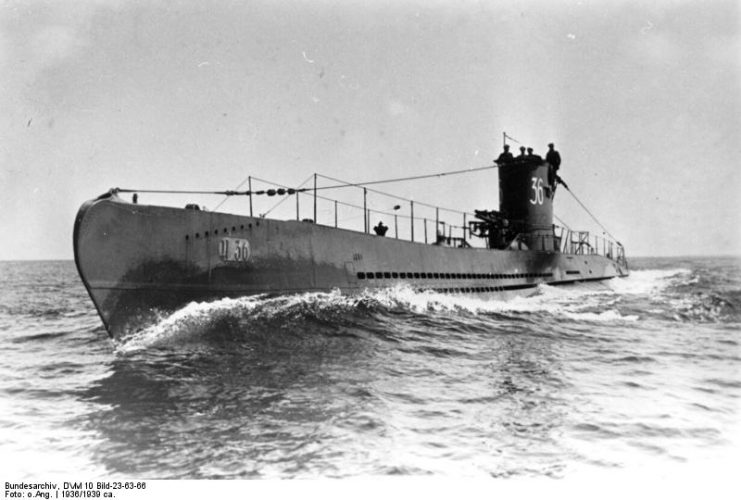
With this in mind, the War Production Board decided that to curb the threat of U-boats against American shipping, planes would be used instead of transport ships. But this presented a different challenge because only a handful of transport aircraft could fly trans-Atlantic distances nonstop.
Moreover, no existing plane could accommodate really heavy material like a 30-ton M4 Sherman medium tank, for example. Thus the requirement for aircraft that could cross the Atlantic with particularly hefty payloads was released.
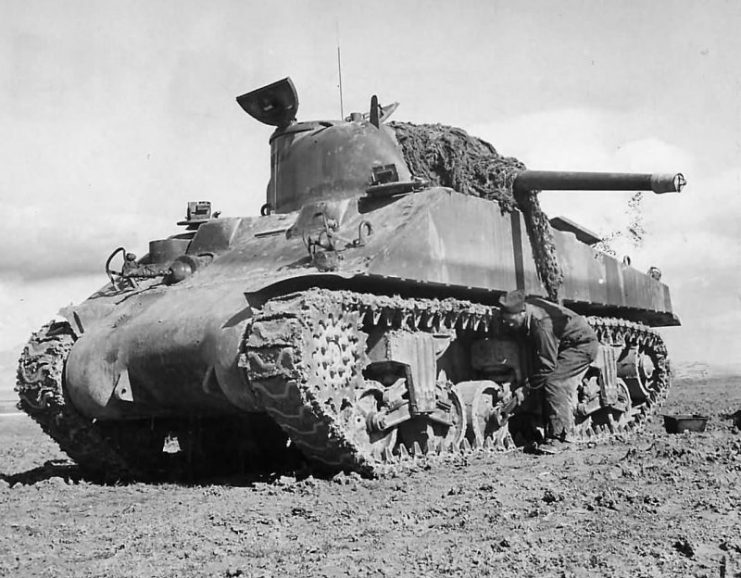
Making the challenge tougher was the fact that, owing to wartime priorities, key materials such as aluminum alloys and steel could not be used.
Challenge Accepted
This challenge was, however, intriguing to American industrialist Henry J. Kaiser. He is known for his Liberty ships, which were the most-produced ships in the United States’ history, symbolizing American wartime industrial output.
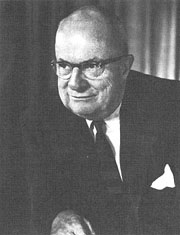
Kaiser promptly drew aircraft designer Howard Hughes into the project. Hughes had already established himself as a famous Hollywood producer, industrialist, engineer, and record-setting pilot. Being one who loved to make history, Hughes did not need much convincing to join in on the project.
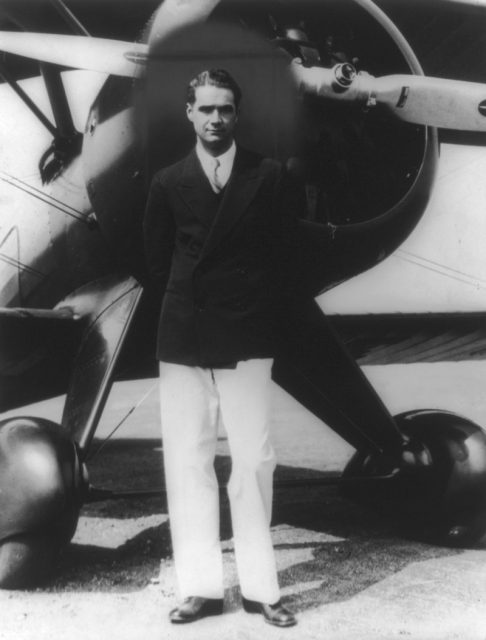
It is important to note that the project was originally opposed by the U.S. military, which believed that it would drain resources required for higher priority programs. However, after Hughes pulled some strings in Washington, DC, the Pentagon decided to let the project go on—but still maintained that strategic materials be used only for programs that had higher priority.
Initially designated “HK-1 Hercules” to reflect the Hughes-Kaiser collaboration, the aircraft was designed to carry up to 150,000 pounds of cargo. This was effectively equal to two M4 Sherman tanks, or 750 fully equipped troops.
The HK-1 contract required three aircraft to be completed by 1944. But although the contract was awarded in 1942, it was over 16 months before actual construction began. By then the U-boat threat in the Atlantic had been beaten and the aircraft was no longer needed.
The project was continued, anyway.
The Spruce Goose Takes Shape
Owing to the unavailability of metals, Hughes and Kaiser resorted to the least ideal material for making such a large plane: wood.
The aircraft was to be made mostly out of birch and spruce in what would be deemed a technological tour de force. The team employed the “duramold” process, which laminated birch plies and phenolic resin into lightweight but strong building materials that could be shaped.
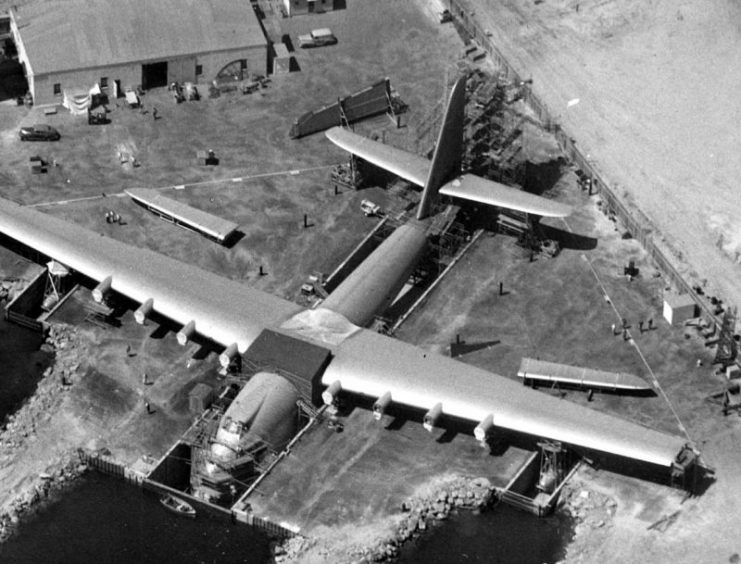
When the press learned of this, they coined the sobriquet “Spruce Goose” for the aircraft, ignoring the fact that it was actually almost entirely made of birch. Hughes was particularly annoyed by the nickname given to his aircraft, as he deemed it an insult.
The making of the Hercules was a rather slow-paced process. Kaiser attributed this to a number of factors which included the government’s tardy response to the financial needs of the project, as well as Hughes’ notorious perfectionism. Hughes was hard to satisfy and kept making abrupt changes to even the tiniest details, from the structure of the chairs to the layout of the control panel.
Frustrated by the sluggishness of the entire program, Kaiser withdrew in 1944, leaving Hughes to continue on his own. Hughes did continue the project, changing the aircraft’s name from HK-1 Hercules to “H-4 Hercules.” The building of the aircraft took place at Hughes Airport, where Playa Vista is currently located, in California.
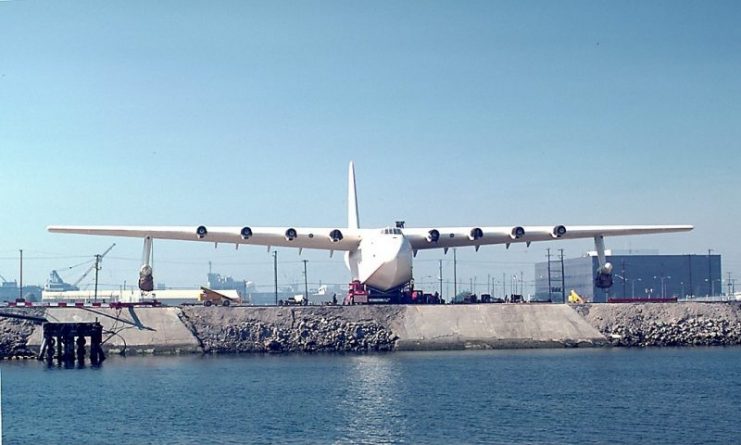
The U.S. government also decided to pull the plug on the project, but a vigorous lobbying campaign by Hughes led the government to agree to fund the completion of just one aircraft, instead of the three that were originally requested.
Two years later, all sections of the Hercules were ready to be transported to the assembly site at Long Beach, California. The colossal aircraft was moved in three sections, along a road cleared of traffic and lined with an awe-struck public.
Once assembled, the aircraft had a wingspan measuring 320 feet, which indeed is longer than the average football field. It stood over five stories tall, and had a length of nearly 220 feet. At that time, it became the largest aircraft ever built.
Meanwhile, the project had continued to drag on—for two years after the war ended. By then the US had pumped $22 million into the project, and Hughes spent approximately $18 million to finish the project after the U.S. government’s eventual withdrawal from the contract. This amount translates to roughly $455,600,000 in the year 2019.
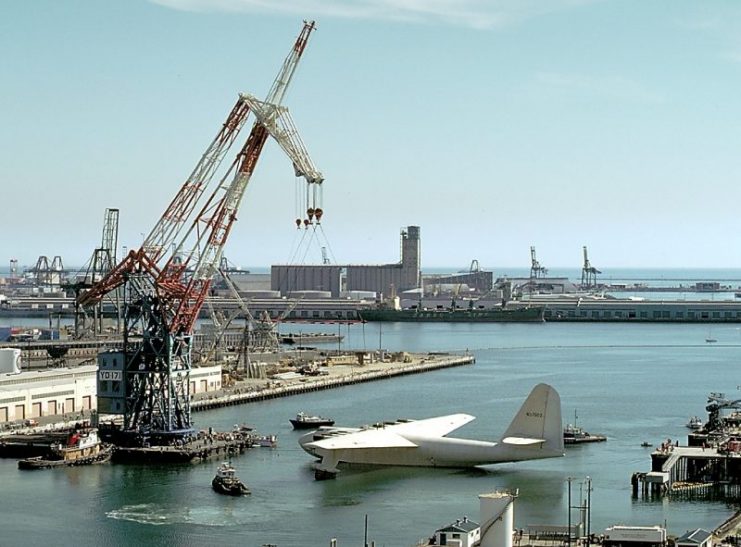
In August 1947 Hughes was summoned before the U.S. Senate’s special committee for investigating national defense programs. He was asked to explain why, two years after the war and way past his stipulated deadline, there was no flying aircraft to show for the massive amount of taxpayers’ money invested into it.
Leading the charge on this warpath was Maine Senator Owen Brewster. However, Hughes turned the tables around by stating: “I put the sweat of my life into this thing. I have my reputation all rolled up in it and I have stated several times that if it’s a failure, I’ll probably leave this country and never come back. And I mean it.”
The Spruce Goose Takes Flight
In November 1947, the Hercules was finally completed. With his copilot David Grant, 16 mechanics, two other flight crew members, and invited members of the press, Hughes embarked on taxi trials with the Hercules.
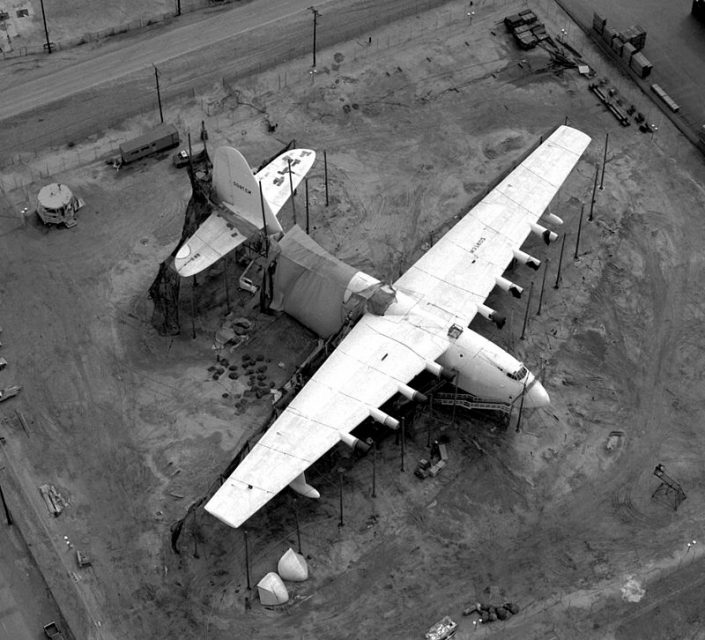
Firing up the eight Pratt & Whitney R-4360 Wasp Major radial engines, Hughes taxied the behemoth around the bay. The aircraft was not expected to fly, only run through the channel facing Cabrillo Beach.
After the first two taxi runs, Hughes decided to set the speed a notch higher on the third run. This time, to everyone’s surprise—including Hughes—the Hercules took to the air.
The aircraft flew 70 feet above the water at 135 miles per hour, staying in the air for about 30 seconds before Hughes decided to execute a landing.
The Spruce Goose never flew again. But it had just established itself as the aircraft with the largest wingspan to ever fly.
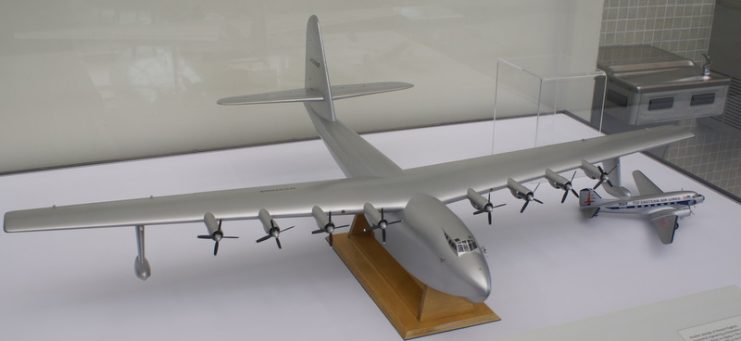
The Hercules remained the longest and heaviest aircraft ever made, until the Antonov An-225 was developed in 1985. However, its wingspan record remained unbroken until April 13, 2019, when Stratolaunch embarked on its maiden flight over the Mojave desert, snatching the 71-year-old record from the Hercules.
Following its one and only flight, the Hercules, upon Hughes’ instruction, was kept in a specially built and secluded hangar, where it remained for thirty-three years.
Time caught up with Hughes and his giant aircraft. Hughes passed away in 1976, and the hangar’s lease expired. Ownership of the Hercules had been subject to dispute by the U.S. government, since it had originally released the contract for the aircraft’s construction.

Following Hughes’ death, it was agreed that the aircraft would be divided among the Smithsonian and eight other museums. But Aero Club of Southern California acquired the aircraft in 1980, saving it from being dismantled.
The Hercules emerged from seclusion into the international spotlight on October 29, 1980. “Herman the German,” the world’s largest floating crane at the time, lifted the aircraft onto the dock of the storage area in a process that took almost 48 hours.
By March 1982, the flying boat had been moved down Long Beach Harbor into a colossal geodesic dome adjacent to the Queen Mary ship exhibit.
Read another story from us: The Gigantic Martin JRM Mars Flying Boat in Pictures
Ownership of the H-4 Hercules moved to Walt Disney in 1988, and would ultimately move to Evergreen Aviation and Space Museum in McMinnville, Oregon.
The aircraft arrived its new location in 1993, after taking 138 days to transport across 1,055 miles from Long Beach, and is currently being preserved at the Evergreen Aviation and Space Museum. It still remains the largest flying boat ever built.
